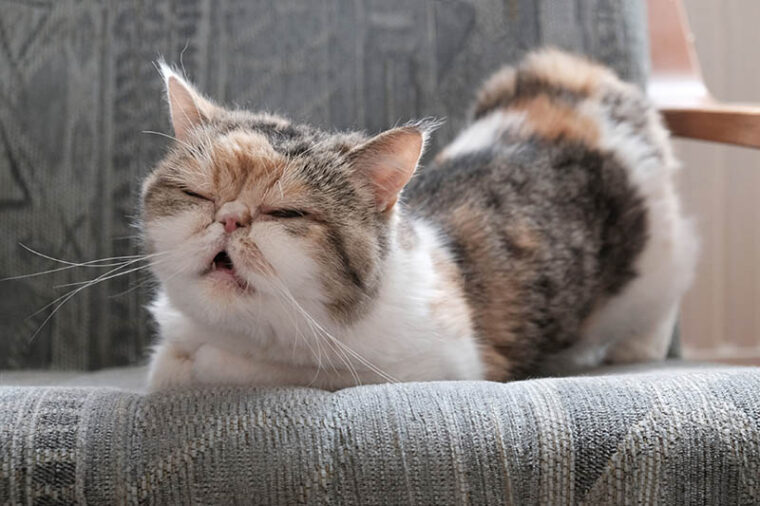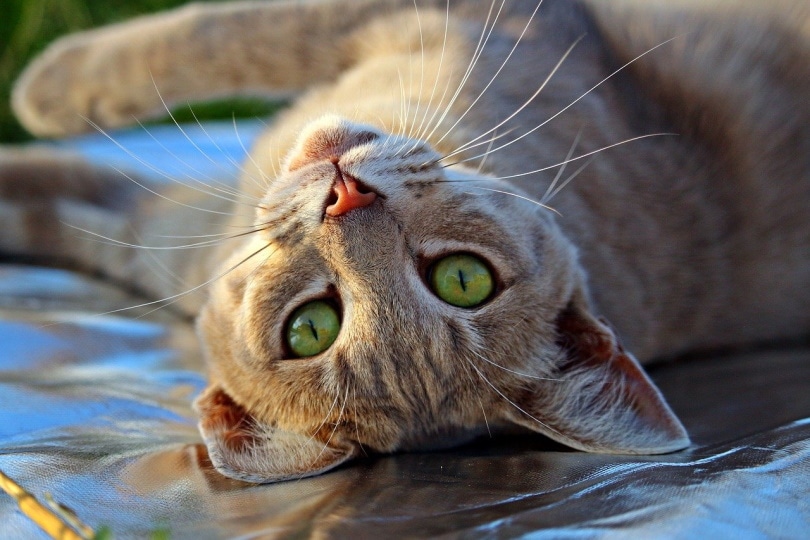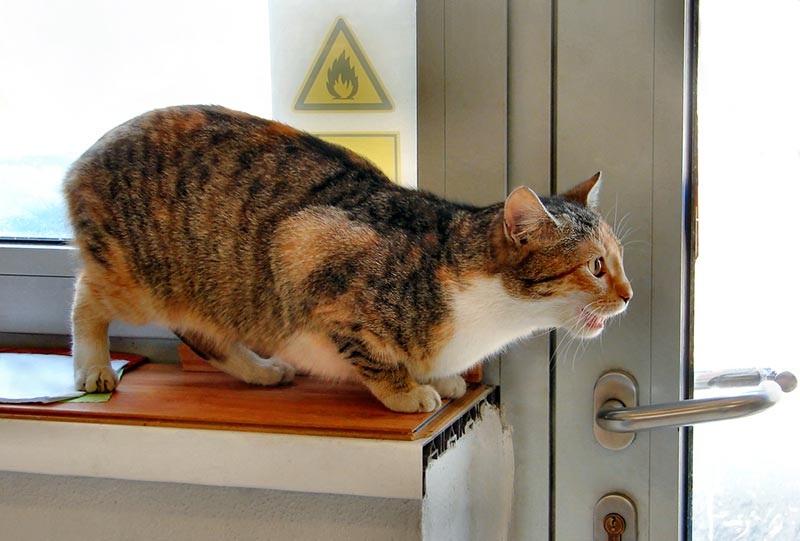
Click to Skip Ahead
Although most cat owners consider their pets family, we know we can’t expect our kitties to behave like people. However, that doesn’t mean they don’t experience some similar bodily functions. For example, cats do have periods, although it’s usually called a heat cycle in animals.
As a general answer, cats do have periods or heat cycle, however, is much different than what you might be familiar with in humans. Keep reading to learn more about cat periods, including the signs of a heat cycle, plus what you can do to prevent them.
When Do Cats Start Their Periods?
A female cat will have their first heat cycle after reaching sexual maturity or puberty. For most cats, that is around 6 months of age. The exact age varies based on the time of year, or more specifically; it depends on how many hours of daylight the cat is exposed to.
Some cat breeds, particularly long-haired ones, may take longer to go into heat. Cats may go into heat as young as 4 months or not until they’re a year old or more. Indoor-only cats are constantly exposed to artificial light, which makes predicting the time of their first heat cycle more complicated. A cat can get pregnant during any heat cycle, including their first one. Senior cats continue to have a heat cycle, too, unlike older humans.

How Often Do Cats Get Their Periods?
Female cats can go into heat every 2–3 weeks during a breeding season. Again, the number of daylight hours significantly affects how often cats go into heat. Generally, cats start going into heat when they’re exposed to 14–16 hours of light per day.
North of the Equator, a typical cat breeding season can last from January to October. However, indoor cats may continue to go into heat all year round because of artificial lighting.
How Long Does a Cat Period Last?
On average, a cat heat cycle lasts for about 7 days. However, it could range from 2–19 days in total.
If the female cat mates while they’re in heat, they will ovulate or produce eggs. When that happens, the cat skips the interestrus portion of the cycle and enters a separate phase called diestrus. Female cats will only ovulate if they find a mate.
Once the breeding season is over, cats enter the final stage of the heat cycle, called anestrus, or no period. However, indoor cats may never experience this part of the cycle and continue to have periods year-round.

What Are the Signs of a Cat Period?
Most signs that a cat is in heat are behavioral changes rather than physical ones. Bleeding or spotting, which humans associate with periods, is rare in cats. However, a cat in heat may pee more often, pee outside the box, or have smelly urine.
The most common behavioral signs that your cat is in heat include:
These signs occur during the estrus or true heat phase of the cycle. If the cat mates and then ovulates, the signs of being in heat usually stop after 1–2 days. Without ovulating, the cat will continue to experience heat cycles until the days get shorter.
Can You Prevent a Cat Period?
If dealing with a moody, noisy female cat every 2-3 weeks, often year-round, doesn’t sound like fun, the good news is that you can prevent the heat cycle by spaying your cat. As we mentioned, unspayed female cats experience multiple heat cycles during the year, and each one offers the potential for pregnancy.
Female cats may mate multiple times during a heat cycle and with different males. Cats don’t recognize family bonds either, meaning they’ll mate with kitties who are related to them. Talk to your veterinarian about the best time to spay your female cat. Spaying your cat will stop the heat cycle and prevent accidental pregnancy. Unspayed cats are also at a higher risk of health issues such as pyometra or an infection of the uterus as well as mammary cancers.
Conclusion
Like humans, unspayed female cats experience regular periods or heat cycles. Female cats go into heat multiple times a year, sometimes year-round, if they live indoors. If you choose not to spay your female cat, be prepared to take precautions to avoid accidental breeding. Remember, any unneutered male cat is a potential mate, including kitties who are related to each other. With millions of stray and unhoused cats in the world already, spaying your cat means not only will you prevent the heat cycle, but your kitty won’t be responsible for adding to this overpopulation.
Featured Image Credit: iwciagr, Shutterstock








